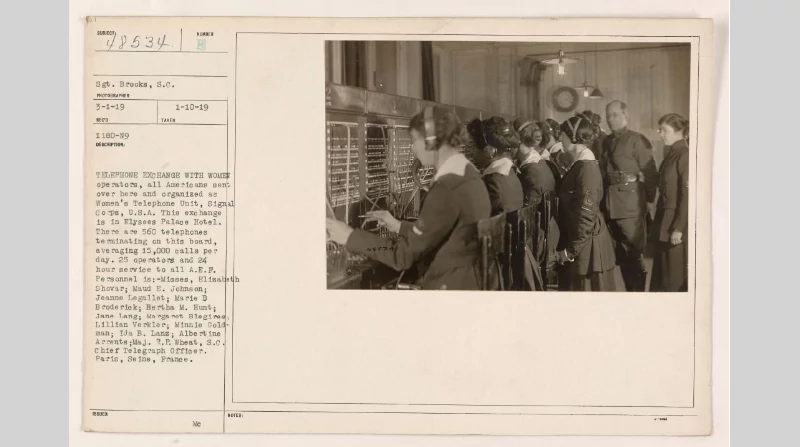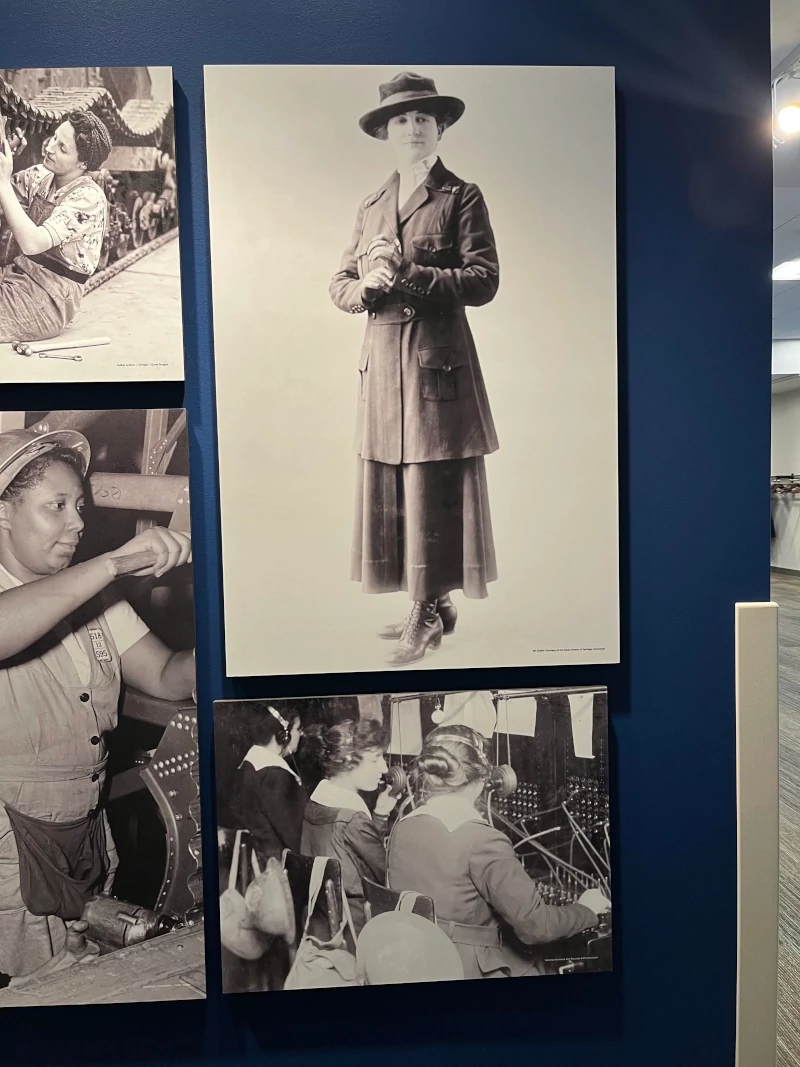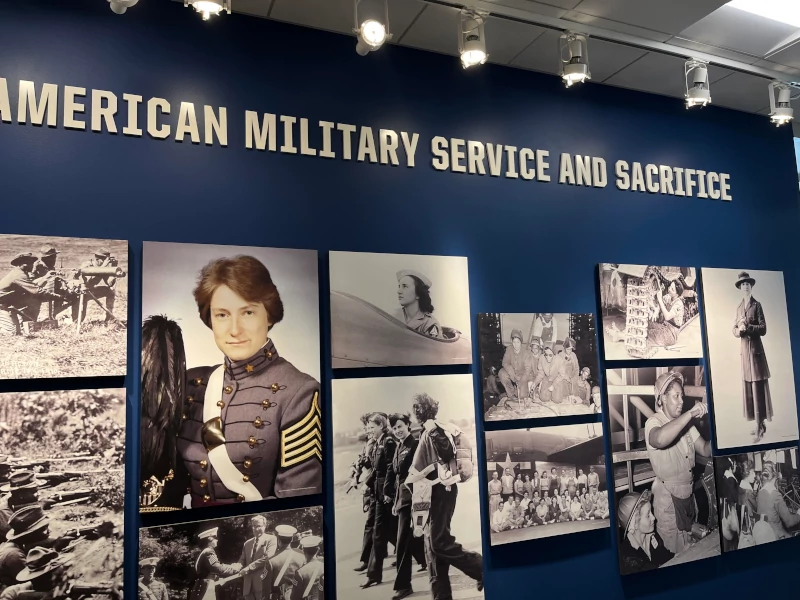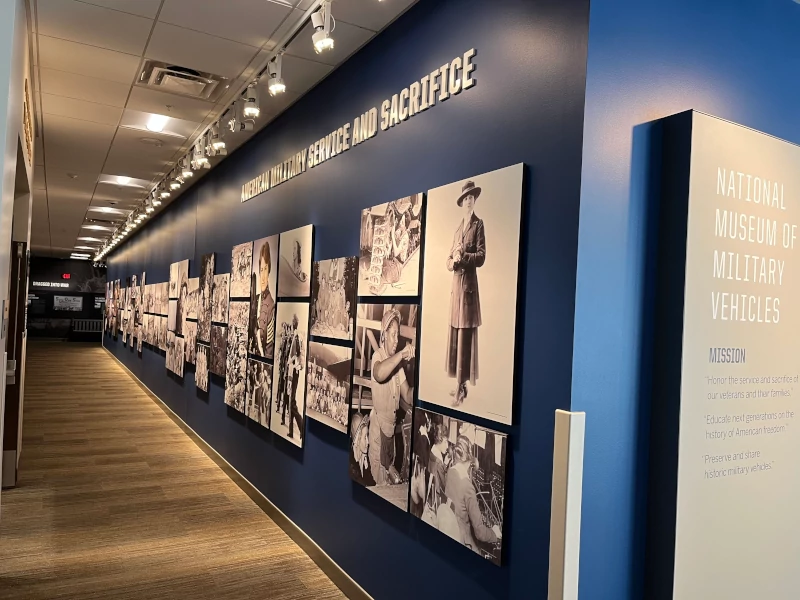

American telephone girls, members of the U.S. Signal Corps, whose efficiency contributed to the success of the American troops in the capturing of St. Mihiel. Eventually, 233 women were working at switchboards by the Armistice.
By Douglas R. Cubbison, Curator, National Museum of Military Vehicles
Hello Girls
The National Museum of Military Vehicles honors Women's History Month with this historical piece recalling an important role women played in World War I which was the first time in American history that the United States sent soldiers abroad to defend foreign soil.
When the American Expeditionary Force (AEF) arrived in France beginning in June 1917, they initially utilized the French telephone system. The challenges of American officers communicating through a series of French military telephone operators can only be imagined. Accordingly, on November 10, 1917, General John J. Pershing requested that 85 women switchboard operators be enlisted and dispatched to France. He specified that the women needed to be bi-lingual (French and English). Eventually, 233 women were working at switchboards by the Armistice, with additional operators then standing by to travel to France to support Pershing's planned 1919 offensive. They adopted the name "Hello Girls" which was already in popular use to describe female telephone operators.

Unfortunately, the women's legal status as members of the U.S. Army was never well established. In 1917, the only female members of the U.S. Army authorized by the U.S. Congress and President were nurses. The Army considered the female switchboard operators to be contract employees of the Signal Corps. When they were discharged in 1920, they returned home without recognition or benefits. It would not be until 1977 that the surviving "Hello Girls" were granted full recognition and benefits as U.S. Army Veterans.

However, the women were required to wear uniforms (navy blue wool skirts and blouses based upon Nurse's uniforms), adhere to military discipline (they were subject to military court-martials for disciplinary purposes), and had to wear steel helmets and carry gas masks for their protection. They traveled by military transport, ate Army rations in military mess halls with other doughboys, and lived in Army barracks and tents.

Original Signal Corps telephone operator uniforms and artifacts are extremely rare, although there are a number on display at various museums and private collections throughout the nation. Our Museum does not have a Hello Girls collection to display.
At least one "Hello Girl," Miss Cora Bartlett of Michigan, died of typhoid fever in France on June 23, 1919. One operator, Miss Grace D. Banker of New Jersey, received the Distinguished Service Medal in May 1919: "From exceedingly meritorious and distinguished service, and by untiring devotion to her exacting duties under trying conditions, did much to assure the success of the phone system during the operations against the St. Mihiel salient and north of Verdun."
The National Museum of Military Vehicles recognizes the early service and sacrifices of Female Telephone Operators with the U.S. Army during World War I by a photograph in Corridor 108, dedicated to "American Military Service and Sacrifice". This specific photograph is an official U.S. Army Signal Corps photograph from the National Archives and Records Administration.

If you wish to continue to explore the history and experiences of the "Hello Girls", the National Museum of Military Vehicles recommends a book by Elizabeth Cobbs, "The Hello Girls" (Harvard University Press, 2017). The book is available in our Museum's Gift Shop.